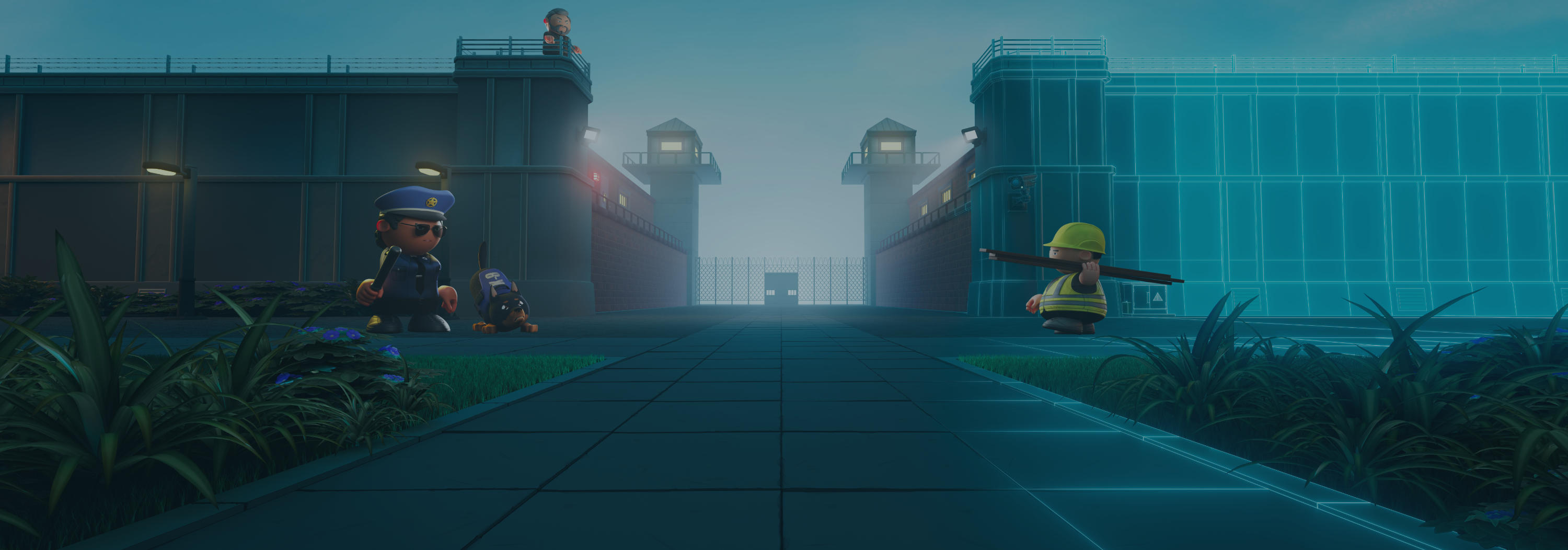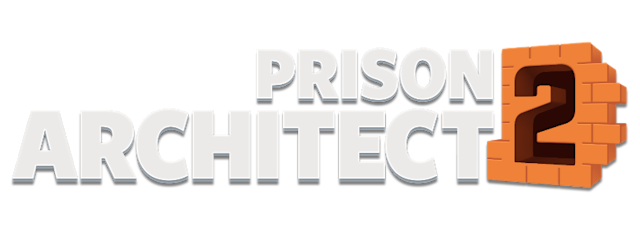

News and Updates
News and Updates
Meet our devs and take a deep dive into our most recent progress!
Dev Diary #2 - Kokku's Intake
Hello Architects,
This week the developers at Kokku will tell you more about how it started for them and how they work. You will also get more in-depth information in the accompanying dev diary below the video, enjoy!
As you heard in the Dev Diary video, we work in sprints, but what is that? In the following text, we will explain what a sprint is, what we have focused on during these past weeks, and what the upcoming focus will be.
What is a Sprint?
Let’s begin by taking a look at the process we go through when making a game. Generally speaking within the gaming industry, developers work agile in something called sprints which is part of a framework called SCRUM. These sprints can be different in length and what content should be included depending on what studio you are working with, working this way is also very common within IT. With Prison Architect 2 specifically, we work with sprints that span across 2 weeks.
A sprint is usually focused on one main goal which is then split into tasks by discipline, art, programming, design, and so forth. The devs then set out to complete these tasks and once they’ve done so, it’s time to evaluate the work. When doing this you go through all your tasks, was there something that you were unable to finish due to something missing from another discipline? Was there something that you finished but realized needed more attention? This is the time to bring it up in your retrospect which then helps plan the next sprint. This way of working is essential to make sure to always evaluate the work as you go but it is also for developers to take some time to appreciate their work, do some game tests of the new fixes, or features they’ve worked on, and also a way to make sure we always improve our workflow and work methods.
Let’s have a closer look at the different aspects of the SCRUM framework using a visualization of it and some definitions to explain the different areas.

What is a Game Backlog?
The backlog is where you store all of the game’s unfinished tasks. When you plan a sprint you can either withdraw a task from the backlog and put it into your current sprint. You can also add tasks to your backlog that you discover are unfinished or not being able to be completed at this time during your Sprint Review.
What is Sprint Planning and Goal - Backlog?
This is when you plan out what tasks your team will be working on during a sprint. You define a goal and put fitting tasks in the sprint drawn from the backlog or you create new tasks that suit the goal and game’s needs at the time to fulfill the sprint’s goal which you have defined.
What is the Scrum Team and Daily Scrum?
The Scrum team is your developers, your product owner, and your scrum master! In the shortest of definitions, the devs are the ones making sure tasks exist and get done, the product owner is making sure the game’s goals are being met and also that the backlog is up to date and well used by the devs during their sprints, finally the scrum master is leading and coaching devs and product owner through the scrum framework, making sure to get the best use out of it as possible!
Daily Scrum is a short daily meeting where the team makes sure they’re on track to reach the Sprint Goal but also a time to raise awareness of potential issues that may need adjusting in order to stay on track.
What is Increment - Definition of Done?
An increment is a collection of tasks that the team have defined as done during the sprint. You can have multiple increments during a sprint and they are then presented during the Sprint Review.
What is Sprint Review?
During this stage, the team presents their sprint results, what tasks are done, and which are not. There’s also a discussion if the sprint goal was reached, essentially you review your sprint! :D
What is Sprint Retrospective?
This is the stage to improve your workflow. The team reviews their workflow and work practices rather than their results as they do in the sprint review and tries to find ways to improve their quality and effectiveness. It’s used as a way to always evaluate your workflow to not get stuck in unhealthy or unproductive ways of working.
Now let’s have a look at what we did in our latest sprint:

Our Dev Diaries will, as previously mentioned, cover the progress of our latest finished sprints, and any additional information that we see value in including, so let’s get right into it!
This week it’s our two latest sprints we’ll be sharing some takeaways from with you all. During these past weeks, the focus has been steered towards an overhauling memory investigation (yes, developing games can occasionally include some detective work 🕵️) by our engineering team and preparations for bug and performance fixes for the next upcoming build.
Let’s get into a little bit more detail:
Launching a memory investigation
Some of the main focus points for our engineering team have been on stability, performance, and optimization. On the performance side of things, the engineering team has focused on improving memory allocation and memory leaks, so that the game performs well across all platforms and on different configurations. The team split up into task forces to cover different areas of the game and get a better overview, this way they could cover all aspects of Prison Architect 2. The focus was on identifying problems - sometimes they hide very well, providing evidence of the occurrence of these problems - laying out all the facts, and raising possible solutions - brainstorming is the way to go!
While some investigations are still in progress and will carry over to the next sprint, there are already plans set in motion being worked on during this sprint to address some of the things found in the Memory Investigation.

Improving the user experience using tutorials and challenges! We took a closer look at the game’s tutorials, and even though they were good to go, we wanted to enhance the player experience further in both the tutorials and in the scenarios you find within the Career Mode.
After the balance changes that we made in the Career Mode during our last sprint (read more about this in the previous Dev Diary), we also had to update the Scenarios to reflect the new balance changes. In game development, fixing something in one feature will in most cases affect something in another feature. Everything is connected which means that balance changes in one area often lead to having to balance something in a different area as well, however, this is something we were ready for.
At first glance, before the balance changes were made, the mechanics taught in the Main Scenarios were harder to follow and execute for new players. To battle this we initiated an investigation to determine if it was only balance changes that had to be made, or if there were other aspects we had to add or remove to make the scenarios more approachable for all players, while also providing a challenge as you progress. Within this investigation, the conclusion was not only that there was a need for the balance changes, but there are now also additional Challenge levels that are added to the Main Scenarios within the Career Mode, added for the player to explore the mechanics presented more in-depth which will result in our new architects, and more experienced ones, becoming even better at building their penitentiaries!

Balance Adjustments
Additional balance adjustments have been made since the last Dev Diary. As our testers continued to play Prison Architect 2, some parts of the game were experienced as extra punishing to new players, and experienced players also commented on these aspects.

Infirmaries
The prisoners took too long to recover from wounds when their needs were not met. This made the hospital beds ineffective, as they didn’t provide enough positive stats for the prisoners before they left the infirmary, creating a loop of being constantly sick or misbehaving just after being healed. To solve this, the infirmary efficiency has been increased.

Mindfulness Class and the Mindful Trait
The mindfulness class inmates can enroll in only needed one successful course to give the prisoner the mindful trait. If an inmate got this trait, it removed 50% of the frustration increase. Feedback given regarding this was that the game felt too easy if played this way, to the point of it starting to be boring. To fix this we added some more difficulty to increase the fun. With our new balance adjustment, the prisoners now need 3 successes to gain the trait, and it was nerfed to grant only a 20% reduction of the frustration increase.
What is our focus for the upcoming Sprints?

For the upcoming sprints, we will focus on:
Memory improvements taken from the Memory Investigation
Bullet trails
Ponds and lakes
Over-all optimization
As we continue our work ahead, we look forward to sharing more of our progress with you and receiving your feedback. Please continue to share your thoughts and feedback with us!
Prison Architect Dev Team
Community







Stay Up To Date
Sign Up Now and get exclusive wallpapers
Sign up for News & Updates
By subscribing, you agree to receive news and special offers from Paradox Interactive.
